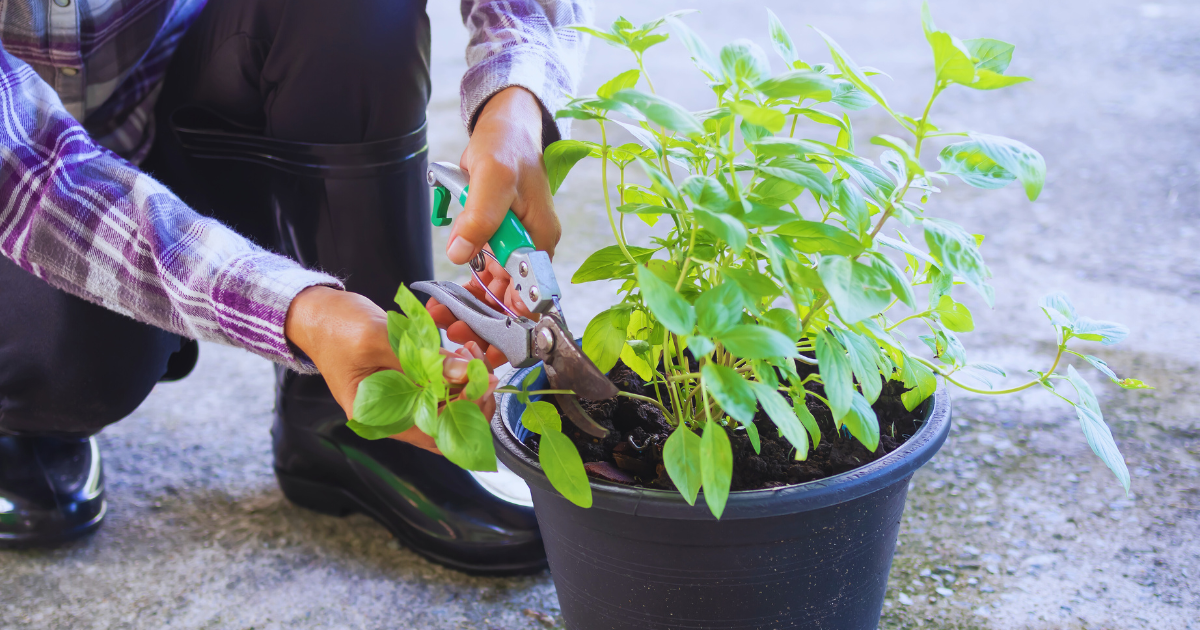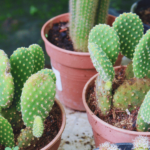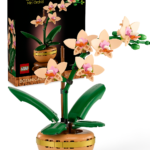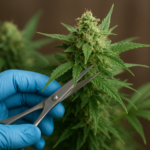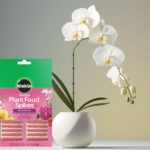Basil is a favorite among gardeners and cooks alike, known for its aromatic leaves and versatility in the kitchen. However, to keep your basil plant lush, healthy, and productive, regular pruning is essential. Trimming basil isn’t just about keeping the plant looking tidy; it’s about encouraging robust growth and maximizing your harvest. When done correctly, pruning can prevent your basil from becoming leggy and promote the development of fresh, flavorful leaves. Whether you’re a seasoned gardener or a beginner, learning how to trim your basil correctly can significantly affect your plant’s vitality.
In this guide, we’ll walk you through the essential tips for pruning your basil plant, ensuring you enjoy a bountiful supply of this delightful herb all season long.
About Basil Plants

Types of Basil
Basil comes in many varieties, each with unique flavor and growing requirements. The most common type is Sweet Basil, known for its large, aromatic leaves, perfect for pesto and Italian dishes. Then there’s Thai Basil, with a hint of liquorice flavour, often used in Asian cuisine. Lemon Basil has a citrusy aroma that pairs well with fish and chicken dishes. With its striking dark leaves, Purple Basil adds a visual pop and a slightly spicy flavor to salads and garnishes. Other varieties include Cinnamon Basil, with its warm, spicy scent, and Holy Basil, which is revered in many cultures for its medicinal properties.
Growth Patterns of Basil
Basil is a fast-growing annual herb that thrives in warm, sunny conditions. It can reach heights of up to two feet, depending on the variety. Basil plants have a central stem from which pairs of leaves grow opposite each other. As the plant matures, it produces flower spikes, which can signal the end of the leaf-growing phase if not managed. Regular pruning encourages a bushier growth pattern, with new stems and leaves developing from the nodes where the cuts are made. This results in a fuller plant and a more abundant harvest.
Is Trimming Important for Your Basil Plant?

Trimming is crucial for maintaining a healthy and productive basil plant. Regular pruning encourages your basil to grow more leaves, prevents it from becoming leggy, and helps you avoid a tall, spindly plant with sparse foliage. Trimming basil stimulates the plant to branch out, creating a fuller, bushier shape with more leaves for harvesting.
Moreover, trimming basil helps delay the flowering process. Once basil starts to flower, the plant’s energy shifts from leaf production to seed production, which can reduce the flavor and quality of the leaves. Regularly pruning and removing flower buds can prolong the vegetative phase and allow you to enjoy fresh, flavorful basil for a longer period.
Trimming also promotes better air circulation within the plant, reducing the risk of fungal diseases and pest infestations. In essence, regular pruning enhances the aesthetic appeal of your basil plant and maximizes its culinary value and overall health.
Benefits of Trimming Basil Regularly
By trimming a regular part of your basil care routine, you’ll enjoy a healthier, more productive plant that provides plenty of delicious leaves for your kitchen.
Promotes Bushier Growth
Regular trimming encourages your basil plant to grow in a bushier, more compact shape. When you cut the stems just above a node, the plant responds by producing two new stems at that point. This results in a fuller plant with more leaves, giving you a larger harvest.
Increases Leaf Production
Regularly trimming your basil prevents the plant from diverting its energy into flowering and seed production. Instead, the plant focuses on producing more leaves, the parts you want to harvest and use.
Prolongs Harvest Period
Trimming basil delays the flowering process. Once basil flowers, its leaves can become bitter, and its growth slows down. By consistently removing flower buds, you extend the period during which the plant produces flavorful leaves.
Improves Air Circulation
A well-trimmed basil plant has better air circulation, which helps prevent fungal diseases and pest infestations. Good airflow around the plant keeps the leaves dry and reduces the chances of mould and mildew developing.
Enhances Plant Health
Regular pruning removes old, yellowing, or damaged leaves, which can drain the plant’s resources. Eliminating these less productive parts helps the plant stay healthy and focus its energy on new growth.
Encourages Stronger Stems
Trimming encourages the development of stronger, sturdier stems. This is especially important for supporting the weight of the leaves and preventing the plant from becoming too top-heavy and falling over.
Maintains Aesthetic Appeal
A regularly trimmed basil plant looks more attractive and tidy. It’s pleasing to the eye and adds a neat, well-maintained appearance to your garden or indoor herb collection.
Boosts Flavor
Regular trimming can enhance the flavor of basil leaves. Pruning encourages the production of essential oils in the leaves, responsible for the herb’s characteristic aroma and taste.
Provides Continuous Supply
With regular trimming, you can ensure a continuous supply of fresh basil leaves for your culinary needs. This means you can enjoy the herb’s fresh, vibrant flavor in your dishes throughout the growing season.
When to Trim your Basil Plant?

Best Time of Year
The best time to trim your basil plant is during the growing season, which typically spans from late spring to early fall. Basil thrives in warm weather, so wait until the danger of frost has passed before you start trimming. Ideally, you should begin pruning your basil once it has developed at least six sets of leaves, usually about six weeks after planting. Regular trimming throughout the growing season will keep your plant healthy and productive. Avoid pruning late in the season when the weather begins to cool, as this can stress the plant.
Signs Your Basil Needs Trimming
Knowing when your basil needs trimming is vital to maintaining a vigorous plant. Here are some signs to look for:
Overcrowding:
If the leaves start to overlap and shade each other, it’s time to trim to improve air circulation and sunlight penetration.
Flower Buds:
The appearance of flower buds is a clear indicator that your basil needs trimming. Pinching off these buds encourages the plant to focus on producing leaves rather than flowers.
Leggy Growth:
If your basil plant grows tall and thin with long stems and fewer leaves, it needs a trim. Cutting back leggy stems will promote a bushier, more robust plant.
Yellowing Leaves:
If you notice the lower leaves turning yellow, it could be a sign that the plant is putting too much energy into the older parts. Trimming can help redirect energy to new growth.
Tools Needed for Trimming Basil
Essential Tools
- Sharp Pruning Shears: A good pair of sharp pruning shears is essential for clean cuts that won’t damage the plant. Dull blades can tear the stems, making the plant more susceptible to diseases.
- Scissors: A sharp pair of scissors can be very effective for smaller basil plants or delicate trimming tasks. Just ensure they are clean to prevent introducing pathogens to the plant.
- Gloves: While not always necessary, gloves can protect your hands from any potential irritation and keep your hands clean, especially if you have multiple plants to trim.
Read Our review for picking best Gloves for your gardening
Optional Tools
- Pruning Knife: A pruning knife can be helpful for more precise cuts or trimming thicker stems. It’s an excellent alternative to shears for detailed work.you can use our FISKARS Garden Pruning Shears for pruning your basil plant
- Disinfectant: Keeping a small bottle of disinfectant handy can help sterilize your tools before and after use, especially if you are working with multiple plants. This helps prevent the spread of diseases.
- Gardening Apron: An apron with pockets can keep your tools within reach while you work, making the process more efficient and organized.
- Plant Labels: If you have different varieties of basil, plant labels can help you track which plants have been trimmed and when. This can be particularly useful for maintaining a pruning schedule.
Preparation Before Trimming
Selecting the Right Basil Plant
Choose a basil plant that is healthy and vigorous for optimal trimming results. Look for plants with vibrant green leaves, sturdy stems, and no signs of disease or pest damage. Different basil varieties may have slightly different growth habits, so select a variety that suits your culinary preferences.
Pre-trimming Care Tips
Before you start trimming your basil plant, consider these tips to ensure success:
- Inspect the Plant: Take a close look at your basil plant to assess its health. Look for any signs of yellowing leaves, pests, or disease symptoms. Address any issues before trimming to prevent further stress on the plant.
- Watering: Ensure the soil is adequately moist but not waterlogged before trimming. Well-hydrated plants recover faster from pruning stress. Water the plant deeply a day or two before trimming to prepare it for the process.
- Fertilization: If your basil hasn’t been fertilized recently, consider applying a balanced fertilizer with good liquid fertilizer a few days before trimming. This gives the plant essential nutrients for new growth and helps it recover faster after pruning.
- Gather Your Tools: Prepare your pruning shears or scissors and ensure they are clean and sharp. Have a small container of disinfectant nearby to sterilize your tools between cuts, especially if you have multiple plants.
- Choose the Right Time: Plan to trim your basil plant in the morning when temperatures are more relaxed and the plant is less stressed. Avoid cutting during the hottest part of the day to minimize wilting.
How to do proper Trimming Basil: step by step
Following these steps will ensure your basil plant stays healthy, lush, and productive, providing a continuous supply of fresh, flavorful leaves.
Choose the Right Time
Start trimming your basil in the morning after the dew has dried but before the sun is too hot. This helps the plant recover quickly and reduces the risk of disease.
Inspect Your Plant
Look for signs that your basil needs trimming, such as crowded foliage, flower buds, leggy growth, or yellowing leaves. Identify which parts need to be pruned.
Clean Your Tools
Ensure your pruning shears or scissors are clean and sharp. If you’re using them on multiple plants, disinfect them between plants to prevent the spread of disease.
Locate the Nodes
Find the nodes on the basil plant. These are the points where pairs of leaves grow opposite each other on the stem. Trimming just above a node encourages new growth from that point.
Make the Cut
Make a clean cut about 1/4 inch above a node using your shears or scissors. Cut at an angle to allow water to run off, which helps prevent rot.
Remove Flower Buds
If you see any flower buds, pin them off or trim them with scissors. This directs the plant’s energy back into leaf production.
Trim Regularly
Continue trimming your basil every 1-2 weeks or whenever you see signs of flowering or leggy growth. Regular pruning keeps the plant bushy and productive.
Harvest Leaves
As you trim, feel free to harvest leaves for your culinary use. Just be sure not to remove more than one-third of the plant at any time to avoid stressing it.
Dispose of Trimmings
Properly dispose of or compost the trimmings. Avoid leaving them around the plant, as they can attract pests or harbor diseases.
Water and Feed
After trimming, give your basil plant a good drink of water. Light feeding can help the plant recover and grow new foliage if it hasn’t been fertilized recently.
Will basil continue to grow after cutting?
Yes, basil will continue to grow after cutting, especially if you prune it correctly. When you trim the basil using the pinching method or pruning shears, the plant responds by directing its energy into producing new growth from the nodes where the cuts were made. This encourages the basil plant to become bushier and produce more leaves.
Regular trimming stimulates basil plants to grow more vigorously. Each time you trim, you encourage the plant to branch out and develop new stems and leaves. This process helps maintain the plant’s shape, prevents it from becoming leggy, and prolongs its productivity throughout the growing season.
It’s crucial to avoid cutting too much of the plant at once, as this can stress it. Instead, trim selectively and regularly, removing no more than one-third of the plant’s growth at a time. With proper care and pruning, your basil plant will continue to thrive, providing a continuous supply of fresh, flavorful leaves for culinary use.
Common Mistakes to Avoid
Over-Trimming
While regular pruning is beneficial, it’s important not to overdo it. Over-trimming can stress your basil plant and stunt its growth. A good rule of thumb is never to remove more than one-third of the plant at a time. This allows the plant to recover and continue thriving. Over-trimming can also make the plant more susceptible to diseases and pests due to the stress.
Cutting Too Low
When trimming, avoid cutting too close to the base of the plant or too low on the stem. Cutting too low can remove too much of the plant’s foliage, essential for photosynthesis. It can also damage the plant’s ability to produce new growth. Always trim just above a node where new leaves can sprout, ensuring the plant can continue to thrive.
Ignoring Flower Buds
One of the most common mistakes is ignoring the flower buds. When basil starts to flower, it signals the end of its vegetative growth phase. The plant will focus its energy on producing seeds rather than leaves, which can make the leaves bitter and less flavorful. Regularly check your basil for flower buds and pinch them off as soon as they appear. This will keep the plant focused on producing lush, tasty leaves.
Using Dull Tools
Using dull pruning shears or scissors can cause more harm than good. Dull tools can crush or tear the stems instead of making clean cuts, leading to plant damage and increasing the risk of disease. Always use sharp, clean tools when trimming your basil to ensure healthy growth and minimize the risk of infection.
Neglecting to Water and Feed After Trimming
After trimming, your basil plant will benefit from good watering and possibly light feeding. Neglecting this step can hinder the plant’s recovery and new growth. Watering helps to hydrate the plant and reduce stress, while a balanced fertilizer can provide essential nutrients for continued healthy growth.
Not Trimming Regularly Enough
Infrequent trimming can lead to a leggy, sparse plant with fewer leaves. Regular trimming encourages bushier growth and more leaf production. Aim to trim your basil every 1-2 weeks during the growing season to keep it healthy and productive.
Pruning at the Wrong Time of Day
Trimming during the hottest part of the day can stress your basil plant. The best time to prune is in the morning when the temperatures are more relaxed, and the plant is less stressed. This allows the plant to recover quickly and reduces the risk of wilting or damage.
How to Trim Basil Without Killing It?
- Use Sharp Tools: Ensure your pruning shears or scissors are clean and sharp to make clean cuts that minimize damage to the plant.
- Trim Above Nodes: Always cut just above a node (where leaves pair off). This encourages new growth from that point.
- Limit Cutting: Avoid removing more than one-third of the plant at a time to prevent stressing it.
- Regular Trimming: Trim your basil every 1-2 weeks to promote continuous growth and prevent the plant from becoming leggy.
- Pinch Flower Buds: Regularly pinch off flower buds to keep the plant focused on leaf production rather than seed production.
- Water and Feed: After trimming, water the plant well and consider light feeding to help it recover and grow new leaves.
- Morning Trimming: Trim your basil in the morning when the plant is less stressed, and temperatures are more relaxed.
Troubleshooting Basil Plant Issues
Identifying Pests
- Aphids: Look for small, soft-bodied insects clustered on the underside of leaves or along stems. They can be green, yellow, or black.
- Whiteflies: These tiny, white, moth-like insects fly up in clouds when disturbed. They often feed on the undersides of leaves.
- Spider Mites: These pests are tiny and difficult to see without a magnifying glass. They create fine webbing on the undersides of leaves.
- Caterpillars: Look for chewed leaves or droppings (frass) on and around the plant.
Read to know more:
Addressing Disease
Powdery Mildew: White, powdery patches on leaves indicate powdery mildew. If the condition is severe, improve air circulation, avoid overhead watering, and treat with fungicidal spray.
Downy Mildew: Yellow-green or brown patches on leaves with fuzzy growth on the undersides. Remove infected leaves and treat them with a fungicide labelled for downy mildew.
Fusarium Wilt: Yellowing and wilting of lower leaves progressing upwards. Rotate crops and avoid overhead watering. There is no cure; affected plants should be removed.
Basil Downy Mildew: Yellowing leaves with dark spots on the undersides. Remove infected plants promptly to prevent spread. Plant-resistant varieties, if available.
Alternative Pruning Techniques
Pinching Method
The pinching method is a simple and effective technique for pruning basil without the need for tools:
- Identify Nodes: Locate the nodes where pairs of leaves grow opposite each other on the stem.
- Pinch Off Tops: Pinch off the top 1/4 inch above a node using your fingers. Pinching encourages the plant to branch out from that point, resulting in a bushier growth habit.
- Regular Pinching: Pinch off the tops of stems every 1-2 weeks throughout the growing season to promote continuous leaf production and prevent flowering.
Using Pruning Shears
Pruning shears are ideal for more precise or heavier pruning tasks:
- Clean and Sharpen Tools: Ensure your pruning shears are clean and sharp to make clean cuts that minimize stress on the plant.
- Locate Nodes: Similar to the pinching method, identify nodes where new growth will emerge.
- Cutting Technique: Position the shears 1/4 inch above a node and make a swift, angled cut. Avoid cutting too close to the node to prevent damaging the emerging growth.
- Trimming Strategy: Use pruning shears for heavier pruning tasks, such as removing leggy stems or harvesting more significant quantities of basil leaves.
FAQ
Why should I trim basil?
Trimming basil encourages bushier growth and prevents the plant from becoming leggy. It also increases the yield by promoting new shoots and leaves.
When is the best time to trim basil?
Trim basil regularly during the growing season, especially when the plant reaches about 6 inches tall. Avoid trimming during extreme heat or cold periods.
How much of the plant should I trim?
Trim the top ⅓ of the plant. Avoid cutting more than one-third of the plant at once to prevent shock and allow the plant to recover quickly.
Where should I cut?
Cut just above a leaf node, which is the point where leaves grow from the stem. This encourages two new stems to grow from that node.
What tools do I need to trim basil?
Use clean, sharp scissors or garden shears to make precise cuts and reduce disease risk.
Can I use the trimmed basil?
The trimmed leaves can be used fresh in recipes, dried for later use, or frozen.
What if my basil is flowering?
If the basil starts to flower, pinch off the flower buds to redirect the plant’s energy back into leaf production. Flowering can make the leaves taste bitter.
How often should I trim basil?
Trim basil every 2-3 weeks during the growing season to maintain a healthy, bushy plant.
Conclusion
Regularly trimming basil is essential for promoting bushy growth and maximizing leaf production. Cutting just above leaf nodes encourages new shoots to develop, resulting in a more abundant harvest. Use clean, sharp scissors to make precise cuts and trim about one-third of the plant at a time. Remove any flower buds to keep the plant focused on producing flavorful leaves. With consistent care and trimming every 2-3 weeks, your basil plant will thrive, providing fresh herbs for your culinary needs throughout the growing season.

